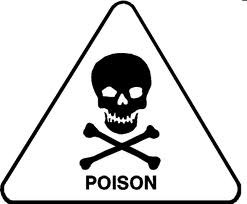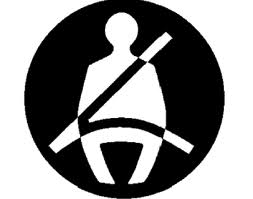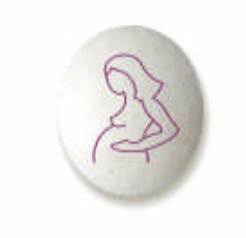Randomized controlled trials (RCTs) came into favor in the wake of thalidomide as a method to evaluate drugs and their risks.
They were supposed to keep ineffective drugs off the market, but companies have learned that you can do any number of trials and if even some show a marginal benefit they can get their drug on the market and the others can be suppressed so no one has a true picture of the effects of the drug. Once on the market, the favorable RCTs are turned into a turbo-charger to boost sales even for debatably effective drugs. The risks get written out of the script by ghostwriters and creative publication strategies.
RCTs in turn underpin the era of guidelines we are now in. As trials became more common, sooner or later, someone was bound to get the idea that all the “scientific evidence” accumulating could be assembled to show which treatments should be used first, which second, etc. This looked like another good way to control pharmaceutical companies and the risks of drugs but it soon became just the opposite. Neither managers nor pharmaceutical companies like the idea of doctors having clinical discretion, and guidelines based on the (published) evidence have become a way to standardize clinical practice and manage risks. What risks?
The irony is that a method introduced to manage the risks of drugs has become one that has been used to shift the blame for things going wrong over to doctors. If the drugs work well and are safe, if anything then goes wrong, it must be the prescriber’s fault. The marketing of today’s drugs always spins them as safer and safer – if so, given that things still go wrong and in fact treatment induced injury is now a leading cause of death and disability, doctors must be becoming riskier and riskier. The effects of a prescription-only embrace has been to leave the formerly healthy tree of medicine sapped by the ever more vigorous pharmaceutical ivy growing on it — at risk of being brought down by the next storm.
Three symbols tell the story.
First there is the now ubiquitous seatbelt symbol. Over the last 30 years, safety features to help manage the risks of driving have become ever more common, from seatbelts to airbags, to cars engineered not to start if the driver is not belted up. In every area of life, except prescription-only medications there is an increasing emphasis on safety warnings; even in sports and war.
 Second is the poison symbol that used to feature on many medicines, particularly those that were dangerous in overdose. It is now all but illegal to refer to a drug as a poison — see The spin that no data can overcome. These symbols have completely vanished. Ironically perhaps, one of the first drugs to advertise itself as not poisonous in this sense was thalidomide. Adverts commonly showed it being taken accidentally by a child, who we were told would not die as a result of taking it where they would likely have died if they had taken the alternate sleeping pill — a barbiturate.
Second is the poison symbol that used to feature on many medicines, particularly those that were dangerous in overdose. It is now all but illegal to refer to a drug as a poison — see The spin that no data can overcome. These symbols have completely vanished. Ironically perhaps, one of the first drugs to advertise itself as not poisonous in this sense was thalidomide. Adverts commonly showed it being taken accidentally by a child, who we were told would not die as a result of taking it where they would likely have died if they had taken the alternate sleeping pill — a barbiturate.
The third symbol comes from Gideon Koren, a researcher at Motherisk in Toronto, who has advocated putting a symbol featuring a pregnant woman on medications like the antidepressants in an attempt to overcome the reluctance of women to take these drugs in pregnancy.
This last symbol seems almost redundant, as despite increasing evidence that antidepressants double rates of birth defects and miscarriages and may cause mental handicap in the children born to mothers who have taken them through pregnancy, prescriptions for these drugs are escalating and they are now among the most common drugs taken in pregnancy.
Medicine used to balance the risks of a poison against the risks from an illness, but now illnesses have become the unique source of risk. Drugs, which are prescription-only because their hazards are unknown and quite liable to exceed the risks of over-the-counter or illegal drugs, in contrast are portrayed as wonderfully safe, fertilizers rather than poisons.
We can hear the desperate plea from the doctor in the Woodley inquest (see Model doctors?), “If we left her untreated and things went wrong what would you say then?”
Doctors have regressed to childhood. They look to a father figure, in particular FDA, when things go wrong. But when they do they find they are not the pet child anymore. The pharmaceutical companies are. And companies are adept at smiling sweetly at Daddy and protesting their innocence.
Put another way, in controlled trials companies have found a Philosopher’s Stone to transform base metals into gold. These trials began as a means to manage clinical uncertainty, but now deliver commercial certainty instead. And under the spell of the Stone the magic that used to lie in Doctors like Dr Kildare and Marcus Welby has migrated into pills like Prozac, Lipitor and Fosamax, while the risks have moved in the opposite direction into doctors. We need to talk about doctors before Lionel Shriver writes a book about their involvement in a school shooting.














You write:
We can hear the desperate plea from the doctor in the Woodley inquest (see Model doctors?), “If we left her untreated and things went wrong what would you say then?”
This is the same conjectural fearmongering that forces people to stay on antipsychotics. It was my opinion of my son’s mental state (not a suicide risk) versus the doctor’s (could be a suicide risk) trying to avoid liability. One really doesn’t know who is a suicide risk and who isn’t, especially if suicide has never been attempted. So, “just in case,” let’s prescribe these meds.
Report comment
There are several points I would like to make:
Firstly doctors are terrified of being sued. Even when they did their best, some people are keen to sue. So doctors do all they can to protect their backs and the backs of their colleagues and never mind the patient! So admitting that they might have made a mistake is taboo.
secondly psychiatrists don’t listen to what their patients have to say but believe blindly what the drugs’ companies’ propaganda.
Thirdly: although psychiatrists are medical doctors, they seem to be ignorant of simple facts such as that you can get psychosis from infection or simply sleep deprivation. When my son developed NMS on olanzapine I was assured by 3 different psychiatrists that you could not get NMS from olanzapine and my son nearly died.Nobody checked on him. I was also assured by 3 different psychiatrists that there were no withdrawal symtoms from 2mg olanzapine and you just stopped taking it. I think psychiatrists need educating about the drugs they prescribe and use a bit more common sense. They don’t seem to know how these dangerous drugs work
Report comment